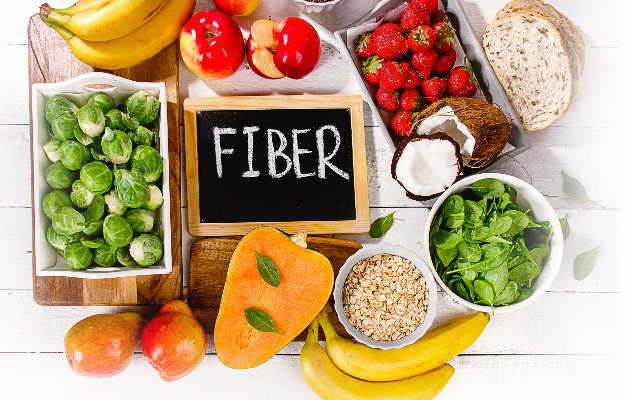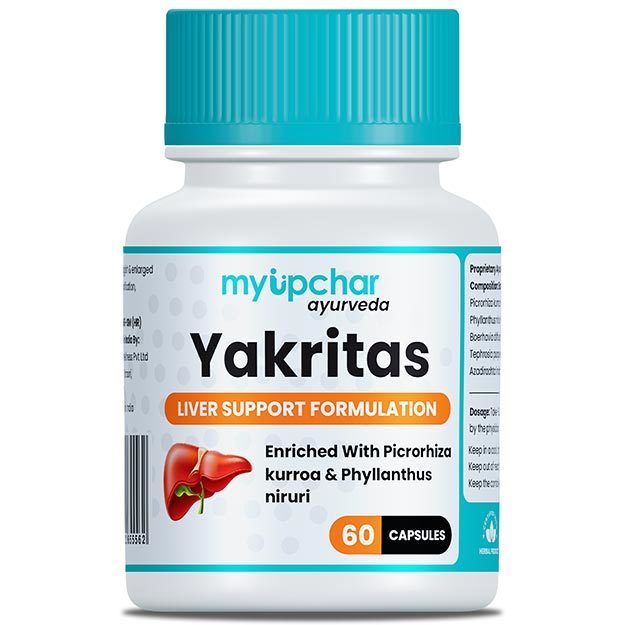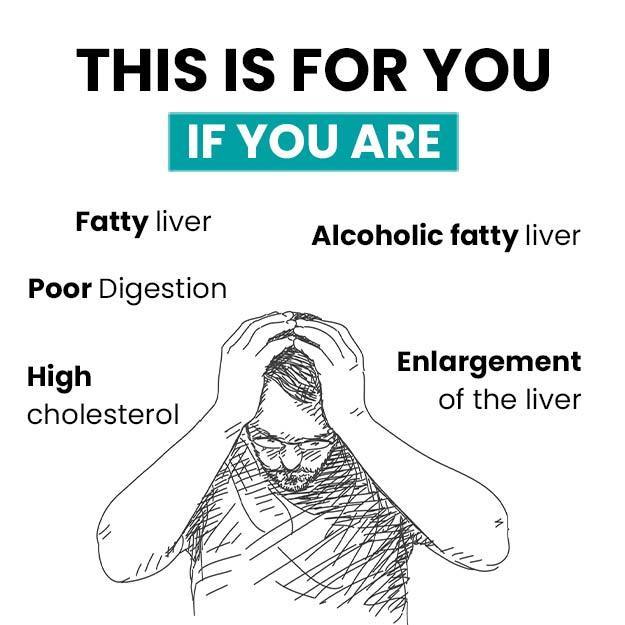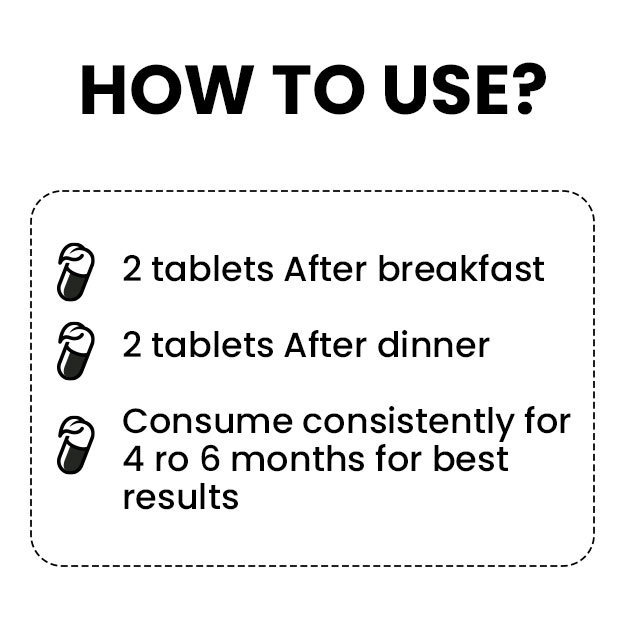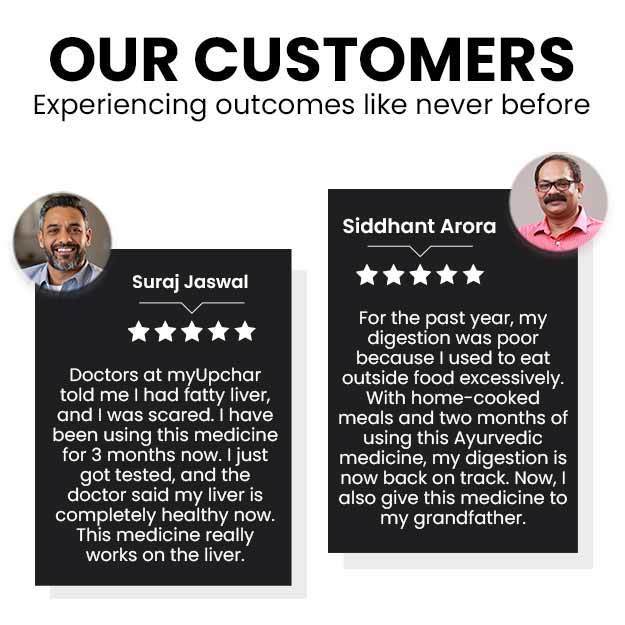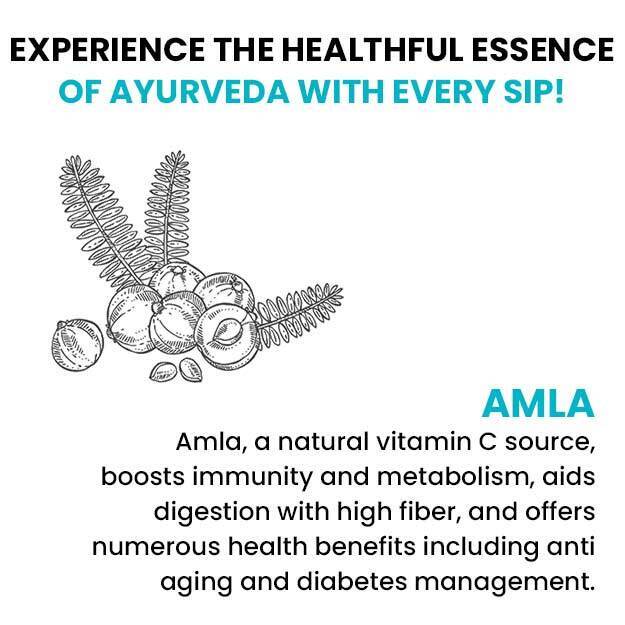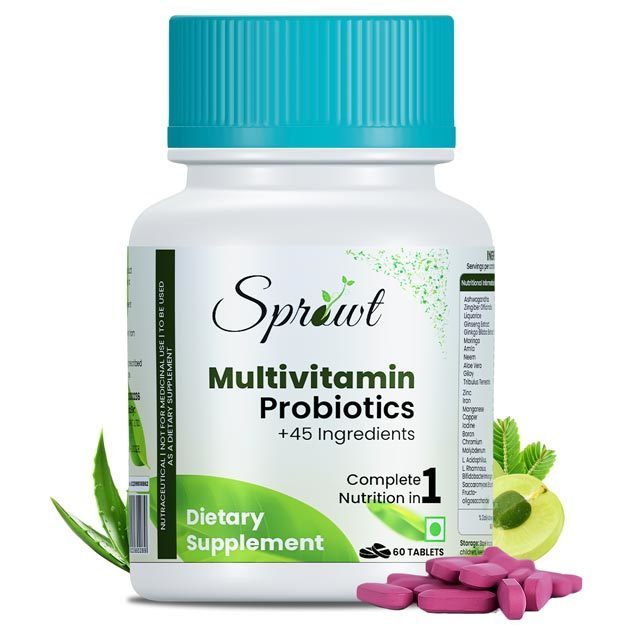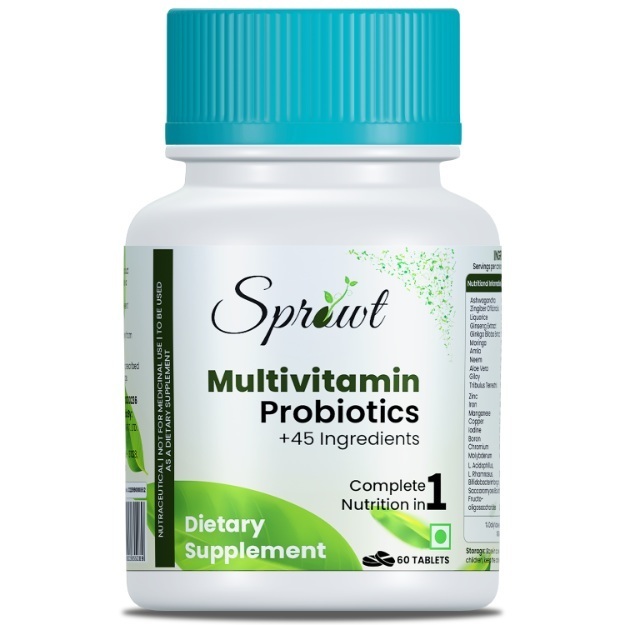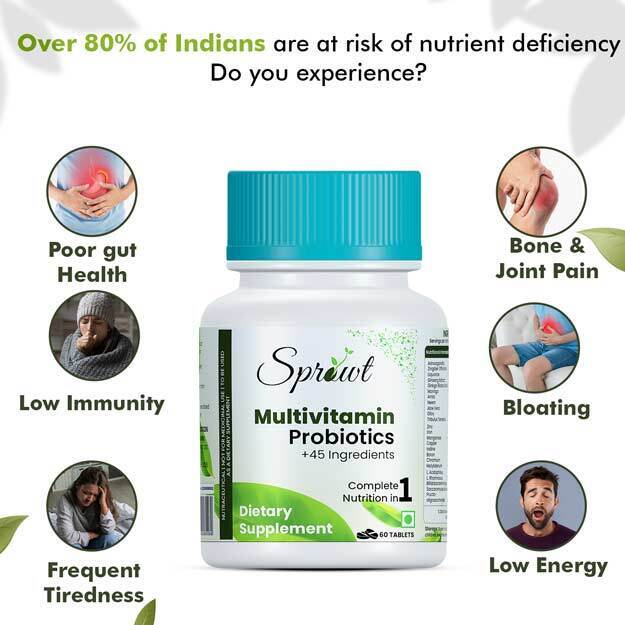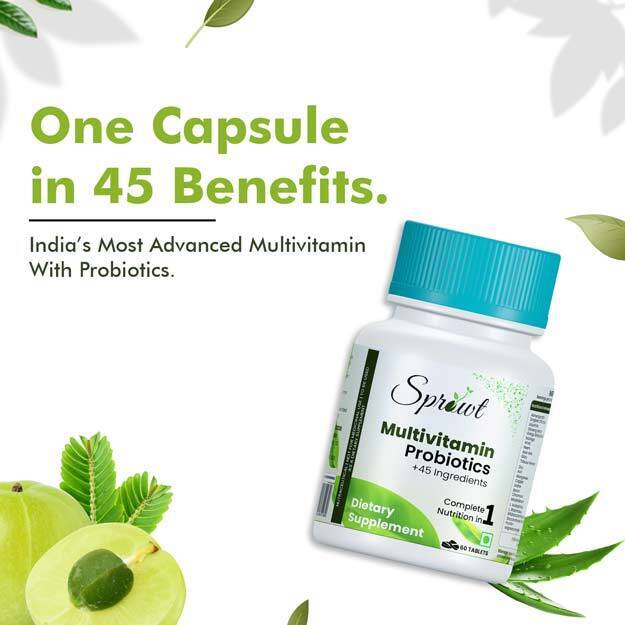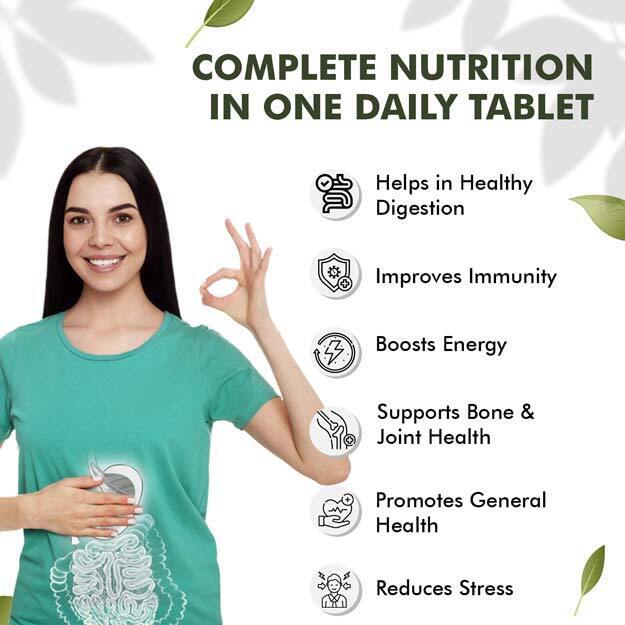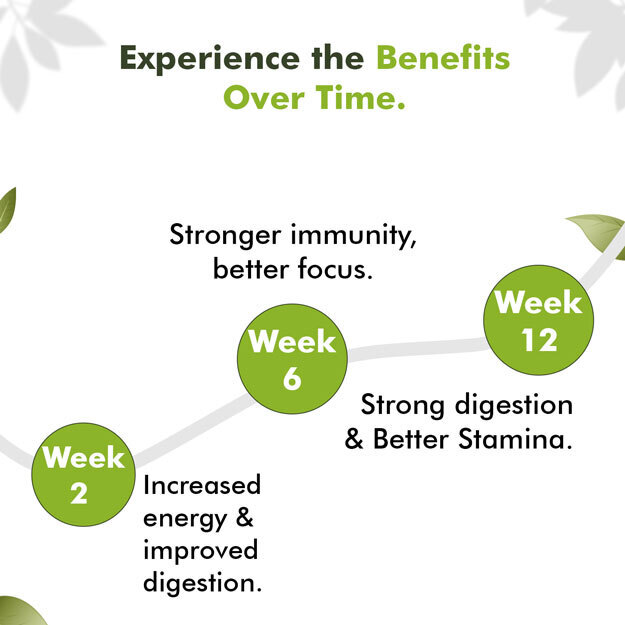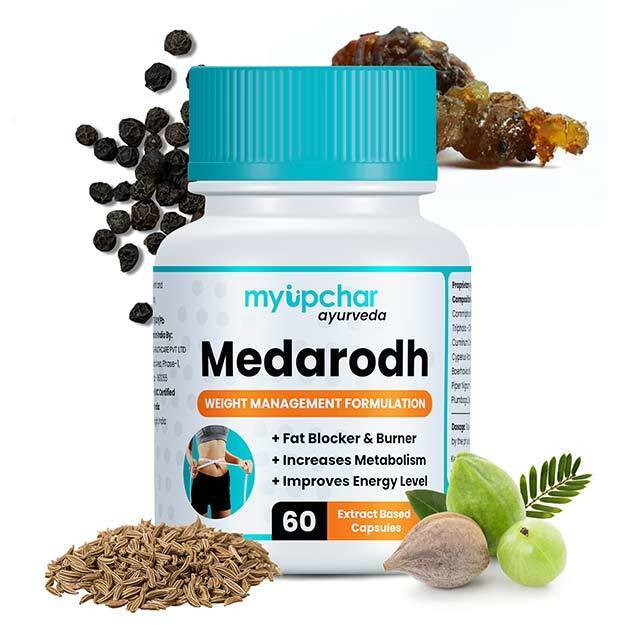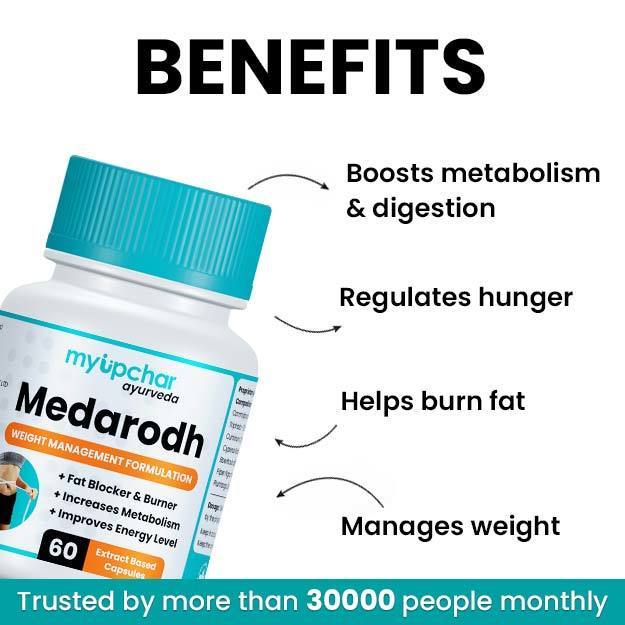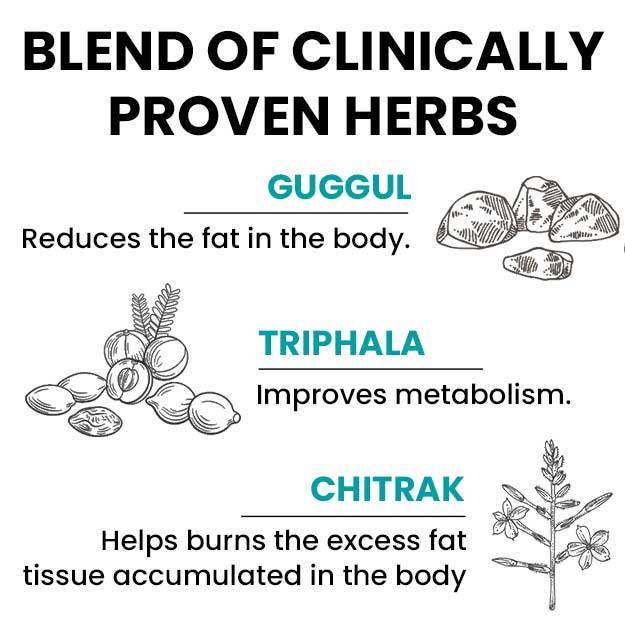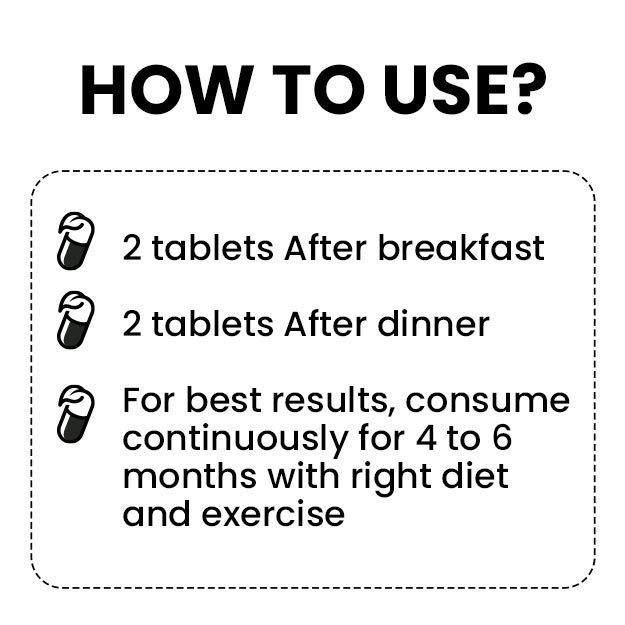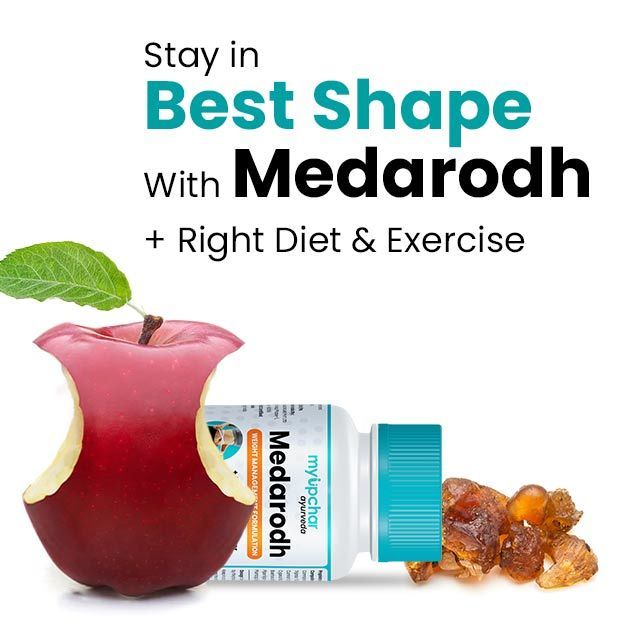Ever felt like your body wasn't quite right? Maybe you're often tired, your digestion feels slow, or you get hungry quickly after eating. You might have heard about fiber before, perhaps from health articles or your doctor. Sometimes, it seems like a small part of nutrition, not a big deal. But it's time to change that idea!
Fiber is actually a very important part of what we eat, found in plants. It's a key building block for a healthy and energetic life. Fiber does more than just help you stay regular. It's like a quiet helper inside your body, doing many good things. It works to improve your heart health, keep your blood sugar steady, help you manage your weight, and can even make you feel better overall.
In this guide, we will clearly explain what fiber is. We'll show you why it's so important for your body and, most importantly, how you can easily add more fiber-rich foods into your daily meals. By understanding and including more fiber, you can improve your health from the inside out. Get ready to feel more energetic, balanced, and well. Your body will definitely appreciate it.
- What Is Fiber?
- Types Of Fibers
- Health Benefits of Fiber
- Sources Of Fibers
- How Much Fiber Do You Need
- Tips for Boosting Your Fiber Intake
- Pros & Cons
- What Should Be Your Fiber-Rich Day
- Takeaway
What Is Fiber?
Let's begin by understanding what fiber actually is. In simple terms, dietary fiber is a special kind of carbohydrate that we find only in plants. This includes foods like fruits, vegetables, grains, beans, nuts, and seeds.
Here's the main difference about fiber: unlike most other carbohydrates, such as sugars and starches, your body cannot digest fiber. This means fiber does not get broken down for energy like other foods. Instead, it travels through your stomach, small intestine, and large intestine mostly unchanged.
And this journey, without being digested, is exactly how fiber does so much good for your body!
To fully understand how fiber works, it's helpful to know that there are two main kinds. Both types of fiber are important and do different, but equally valuable, jobs inside your body.
(Read More: Gluten and Gluten-Free Foods: uses, benefits)
Types Of Fibers
There are two main types of fibers:
Soluble Fiber
One important type of fiber is soluble fiber. When soluble fiber mixes with water in your stomach and intestines, it doesn't really dissolve. Instead, it softens and forms a thick, gel-like substance. This is why it's called "soluble" – it becomes part of the water.
You'll find a good amount of soluble fiber in foods like oats, barley, the soft insides of apples, citrus fruits, carrots, peas, and especially in beans like lentils, chickpeas, and other types of beans.
This gel-like fiber has some great powers. It helps to slow down how quickly food moves through your gut, which is very helpful for keeping your blood sugar levels steady. It can also attach itself to bad cholesterol in your stomach and intestines, helping to remove it from your body. Plus, because it slows things down, it helps you feel full for longer after you eat.
(Read More: The Ultimate List of Vitamin C-Rich Fruits and Vegetables)
Insoluble Fiber
The other main type of fiber is insoluble fiber. This kind is different because it does not dissolve in water at all. Instead, it stays mostly the same as it travels through your digestive system. You can imagine it like a sturdy scrubbing brush for your insides. It adds bulk to your stool and helps push everything along your digestive tract.
Insoluble fiber is found in the skins of fruits and vegetables, in nuts and seeds, brown rice, and the outer layers of many whole grains like wheat bran.
Its main job is to help you stay regular. By adding volume to your waste, it makes it easier for food to move through your system faster. This helps to prevent constipation and ensures your bowel movements are smooth and regular.
(Read More: Effective Home Remedies for Sun Tan Removal)
Why Both Are Important
It's not about picking one type of fiber over the other. For your body to work its best, you need a good mix of both soluble and insoluble fiber. They work together like a well-organized team. Soluble fiber helps to soften things and control sugar, while insoluble fiber adds bulk and keeps things moving. Together, they make sure your digestive system runs very smoothly and offer many other health benefits that we will now explore. So, remember these two fiber helpers the next time you choose your food!
(Read More: What are healthy food and their health benefits)
Health Benefits of Fiber
While fiber is undeniably famous for keeping things moving smoothly in your digestive system, its influence stretches far beyond the bathroom. Prepare to be amazed by the sheer breadth of benefits this humble plant component offers. It's a true multi-talented superstar for your entire body.
Supports Gut Health
This is fiber's undisputed claim to fame, and for good reason!
(Read More: Best Home Remedies to Prevent and Treat Food Poisoning)
- Relieving and Preventing Constipation: Let's get straight to it. If you've ever suffered from constipation, you know how uncomfortable it can be. Fiber is your natural remedy. Soluble fiber acts like a sponge, absorbing water and creating a soft, gel-like mass that makes stool easier to pass. Insoluble fiber, on the other hand, adds bulk to your stool, stimulating your bowel muscles to contract and move waste along more efficiently. Together, they form an unstoppable team against sluggish digestion.
- Promoting Regularity and Healthy Bowel Habits: Beyond just preventing constipation, adequate fiber intake ensures consistent, comfortable bowel movements. This leads to a healthier and happier gut environment overall. Think of it as a smooth, consistent flow, not a stop-and-go struggle.
- Gut Microbiome Support: This is where fiber truly shines in modern health. Your gut is home to trillions of tiny microorganisms – a bustling community of bacteria, fungi, and viruses known as your gut microbiome. When this community is balanced and diverse, it supports almost every aspect of your health. Fiber, especially soluble fiber, acts as a prebiotic. What does that mean? It's like premium-grade food for your beneficial gut bacteria! As these good bacteria feast on fiber, they produce beneficial compounds (like short-chain fatty acids) that nourish your gut lining, boost your immune system, and even influence your mood and brain health. A thriving gut microbiome is a key to improved immunity, better digestion, and even a clearer mind.
- Preventing Digestive Diseases: By maintaining healthy transit times and promoting soft, bulky stools, fiber can significantly reduce your risk of developing uncomfortable and sometimes serious conditions. This includes hemorrhoids, which are often caused by straining during bowel movements, and diverticular disease, where small pouches (diverticula) can form in the colon, leading to inflammation and pain. While not a cure, a high-fiber diet is a primary preventative measure.
(Read More: Best food to stop white discharge naturally)
Blood Sugar Management
For anyone concerned about blood sugar levels, whether managing diabetes, pre-diabetes, or simply avoiding energy crashes, fiber is an invaluable ally.
- Slowing Sugar Absorption: Here's how it works: When you eat foods high in soluble fiber, that gel-like substance formed in your gut physically slows down the process by which sugars from your food are absorbed into your bloodstream. This means you get a more gradual, sustained release of energy, rather than a rapid spike followed by an equally rapid crash.
- Impact on Insulin Sensitivity: By preventing sharp blood sugar spikes, fiber helps your body's cells respond more effectively to insulin, the hormone that ushers sugar into your cells for energy. This improved insulin sensitivity is crucial for preventing type 2 diabetes and managing existing conditions.
(Read More: Packaged food definition benefits side effects)
Supports Heart Health
Fiber's benefits extend right to the core of your circulatory system, actively working to keep your heart healthy and strong.
- Controls Cholesterol: Soluble fiber is particularly effective here. In your digestive tract, it binds to cholesterol particles (especially the "bad" LDL cholesterol) and bile acids, which are made from cholesterol. This binding prevents them from being absorbed into your bloodstream and instead, ensures they are excreted from your body. The result? Lower circulating cholesterol levels, a significant factor in reducing the risk of heart disease.
- Blood Pressure Management: While research is ongoing, many studies suggest a strong link between higher dietary fiber intake and lower blood pressure readings. This multifaceted benefit, combined with its effects on cholesterol, makes fiber a critical component of a heart-healthy diet.
- Reducing Risk of Heart Disease: By positively impacting cholesterol, blood pressure, and inflammation, fiber contributes significantly to reducing your overall risk of developing cardiovascular diseases, keeping your heart ticking strong for years to come.
(Read More: Health benefits and side effects of beverages)
Supports Weight Management
Struggling with portion control or finding yourself constantly hungry? Fiber might be the missing piece in your weight management puzzle.
- Increased Satiety: Fiber adds bulk to your meals without adding significant calories. This physical bulk takes up more space in your stomach, signaling to your brain that you're full. Additionally, soluble fiber slows down the rate at which food leaves your stomach, prolonging that feeling of satisfaction.
- Reduced Calorie Intake: When you feel fuller for longer, you're naturally less inclined to overeat at meals or reach for unhealthy snacks between them. This can lead to a natural reduction in your overall calorie intake without feeling deprived.
- Less Snacking: Imagine eating a meal and feeling genuinely satisfied for hours. That's the power of fiber! It helps curb those impulsive cravings and makes it easier to stick to a healthy eating plan.
(Read More: 9 Healthy Snacks for Weight Loss)
Other Benefits
The research on fiber continues to uncover exciting new connections:
- Reduced Inflammation: A healthy gut microbiome, fueled by fiber, produces compounds that can reduce systemic inflammation throughout the body, which is linked to various chronic diseases.
- Potential Links to Improved Sleep and Mood: The gut-brain axis is a hot area of research. A healthy gut produces neurotransmitters and compounds that can positively influence mood and potentially sleep quality.
As you can see, fiber is far more than just a digestive aid. It's a cornerstone of holistic health, quietly working behind the scenes to support nearly every major system in your body.
(Read More: 5 Best Snacks for Lowering Cholesterol)
Sources Of Fibers
Now that you're convinced of fiber's incredible power, you're probably asking: "Where can I find these superfoods?" The fantastic news is that fiber-rich foods are abundant, delicious, and easy to incorporate into your daily diet. The general principle? "Eat the rainbow" and focus on whole, unprocessed foods. Nature has packed these nutrients right where they belong!
(Read More: Raisins: Your Tiny Powerhouse Snack for Big Health Benefits!)
Here's your ultimate guide to the top fiber sources and practical tips on how to enjoy them:
Fruits Are A Rich Source Of Fiber
Fruits are nature's candy, offering sweetness along with a hefty dose of fiber, vitamins, and antioxidants.
All fruits are a great source of fibre, but the ones you can consume with the skin intact are even better. This is because the skin has additional fibre and nutrients like pectin, which also have enhanced susceptibility to fermentation. These nutrients not only help these fruits provide fibre to your body but also further improve your gut health. Clearly, peeling fruits like apples and pears before eating them is counterproductive and should be avoided if you want to increase your fibre intake.
Apples, pears, strawberries, avocados, raspberries, bananas, figs, grapefruit, guavas, kiwis, mangoes, oranges, papayas, blueberries, blackberries, etc., are all great sources of fibre. Just ensure that you include fruits of different colours in your daily diet.
Tips: Eat whole fruits instead of drinking juice (juice often strips away the beneficial fiber). Add fresh or frozen berries to your oatmeal, yogurt, or smoothies. Slice apples or pears for a quick snack.
(Read More: From Snacks to Skincare: Surprising Uses of Hazelnuts)
Vegetables Are A Rich Source Of Fiber
Vegetables should form the bulk of your plate, and for good reason – they're packed with essential nutrients and fiber!
Vegetables, even starchy ones like potatoes, are very rich in fiber. At least five portions of fruits and vegetables are recommended daily for proper intake of fibre. The only issue is that not all vegetables can be eaten raw, and the nature of the fiber you get from vegetables may change once they are cooked.
Research reveals that while all vegetables have both soluble and insoluble dietary fibre, when you cook the veggies, the former increase in quantity and the latter decrease. In any case, since both soluble and insoluble fibres are good for health, you should consume both raw and cooked vegetables like carrots, beetroot, broccoli, artichoke, Brussels sprouts, kale, spinach, gourds, tomatoes, capsicum, etc.
Tips: Roast vegetables for enhanced flavor, add them to stir-fries, soups, stews, or omelets. Use carrot or cucumber sticks with hummus as a healthy dip. Sneak grated veggies into sauces.
(Read More: Smart Choices: Vegetables For Kidney Health)
Legumes & Lentils Are A Rich Source Of Fiber
If you're serious about boosting your fiber, legumes (beans, lentils, peas) are your secret weapon. They are incredibly versatile, affordable, and loaded with both fiber and plant-based protein.
Chickpeas, cowpeas, kidney beans, mung beans, soybeans, pigeon peas, green peas, groundnuts, edamame, lima beans, black beans, split peas and lentils of all types are exceptionally rich in dietary fibres and minerals. These plant-based foods are anyways part of the Indian diet.
However, as in the case of vegetables, the fibre content of legumes and lentils change when they go through the cooking process. The fibre content also depends on whether or not you’re consuming the legumes and beans with their skin on. The skin of legumes and lentils, quite like those of fruits and vegetables, contains large amounts of fibre as well.
Tips: Add them generously to salads, soups, stews, and chili. Make homemade hummus or bean dips. Try making bean burgers or adding a handful to your rice dishes. They're a fantastic meat alternative that packs a fiber punch!
(Read More: Which fruits and vegetables to eat for weight loss)
Whole Grains Are A Rich Source Of Fiber
This is a crucial category where many people miss out. The key is to choose whole grains, not refined grains, where the fiber-rich outer layers have been stripped away.
When we talk about foods rich in fiber, whole grains are incredibly important. Many people know about refined grains like white bread or white rice, but these have had most of their valuable fiber removed during processing. Whole grains, on the other hand, keep all their natural parts, including the fiber-rich outer layers.
Grains like oats (such as rolled oats or steel-cut oats, often eaten for breakfast), quinoa (a grain that's also a complete protein), brown rice (a healthier choice than white rice), barley (great for soups), and even plain, air-popped popcorn are excellent sources of fiber. For breads and pastas, look for products that clearly state "whole wheat" or "whole grain" as the first ingredient on the label. Many products might say "wheat flour," but this often means it's still a refined white flour with less fiber.
It's important to know that while cooking does change grains, for whole grains, the fiber content remains mostly intact because the entire kernel is present. The benefit of whole grains comes from eating the full grain, including the bran and germ, which are where most of the fiber is found.
Tips: It's easy to add more whole grains to your meals. A simple change is to swap white rice for brown rice or quinoa with your dinner. Choose whole-wheat pasta and whole-wheat bread for sandwiches. You can start your day with a bowl of oatmeal, and even try using whole-grain flours when you bake. Experiment with different whole grains like farro or bulgur in your salads or side dishes.
(Read More: Whole wheat or multigrain bread: Which is healthier?)
Nuts and Seeds Are A Rich Source Of Fiber
These tiny powerhouses are not only rich in healthy fats and protein but also surprisingly good sources of fiber.
All types of nuts and seeds are rich in dietary fibre, apart from also being packed with vitamins, minerals and antioxidants. Nuts like almonds, walnuts, fox nuts, cashew nuts, pistachios, chia seeds, poppy seeds, pumpkin seeds, flaxseeds, sunflower seeds, sesame seeds, etc., are all rich sources of dietary fibre and should be a part of your diet.
It’s important to remember, though, that nuts and seeds generate a lot of heat, so too many of them during summer or monsoon can lead to digestive problems like diarrhoea. You should also avoid the consumption of nuts if you have a nut allergy.
Tips: Sprinkle them on yogurt, oatmeal, salads, or soups. Blend chia or flax seeds into smoothies. A small handful makes for a satisfying and nutritious snack.
(Read More: Diet and Exercise Tips to Combat Stomach Swelling)
How Much Fiber Do You Need
You might be wondering, "This sounds great, but how much fiber should I actually be aiming for?" The general recommendations from health organizations are quite clear, but also highlight a common shortfall in most modern diets.
Recommended Daily Fiber Intake (Guidelines for Adults):
- Adult Women (19-50 years): Approximately 25 grams per day.
- Adult Men (19-50 years): Approximately 38 grams per day.
- Older Adults (51+ years): Recommendations slightly decrease as calorie needs generally decline, but fiber remains crucial. Around 21 grams for women and 30 grams for men.
But, the vast majority of people, across various countries, fall significantly short of these recommendations. Many adults consume only about half the recommended amount, averaging closer to 15 grams per day. This "fiber gap" is a major contributor to widespread digestive issues and chronic diseases.
Closing this fiber gap doesn't require drastic, sudden changes. It's about making smart, consistent choices that add up over time. And remember, these are general guidelines – individual needs can vary based on age, activity level, and specific health conditions. The good news is, getting enough fiber can be surprisingly delicious and satisfying once you know how!
(Read More: How to Combat Stomach Infections)
Tips for Boosting Your Fiber Intake
Now that you're armed with knowledge about what fiber is, why it's amazing, and where to find it, let's talk about practical application. Adding more fiber to your diet doesn't have to be overwhelming or lead to discomfort. The key is a gradual, consistent approach.
Slow But Steady
This is perhaps the most important piece of advice. If you suddenly ramp up your fiber intake from 10 grams to 30 grams overnight, your digestive system might protest with gas, bloating, and discomfort. Your gut microbes need time to adjust to the increased workload.
Add just 3-5 grams of fiber per day each week. This could mean adding a handful of berries to your breakfast one week, then swapping white rice for brown rice at one meal the next week. "Rome wasn't built in a day, and neither is a high-fiber gut!"
(Read More: Hydration and Nutrition Tips for an Upset Stomach)
Hydration is Key
Fiber Needs Water: Fiber acts like a sponge, absorbing water in your digestive tract. Without enough fluid, especially insoluble fiber can actually worsen constipation rather than relieve it.
When you increase your fiber intake, it's crucial to also increase your water intake. Aim for at least 8 glasses (2 liters) of water daily, and even more if you're very active or in a hot climate.
Read Food Labels
Check the "Dietary Fiber" Line. Compare products and choose those with higher fiber content per serving.
When buying breads, cereals, or pasta, ensure "whole wheat," "whole grain," or "oats" is listed as the first ingredient. Terms like "multigrain," "enriched," or "wheat flour" often indicate refined grains with less fiber.
Understand that "good source of fiber" means 2.5-4.9g per serving, while "excellent source" or "high fiber" means 5g or more per serving.
Make Smart Swaps, Not Radical Changes
Swap white rice for brown rice, quinoa, or wild rice. Exchange white bread and pasta for whole-wheat versions. Choose a whole orange over orange juice; an apple over apple juice. The whole fruit retains all its beneficial fiber. Add berries, sliced fruit, chia seeds, or flax seeds to your yogurt, oatmeal, or breakfast cereal.
Make a habit of adding a scoop of black beans, kidney beans, or chickpeas to your salads, soups, stews, or even as a side dish.
(Read More: Lifestyle Tips for Weight Loss)
Get Creative in the Kitchen
Grate carrots or zucchini into pasta sauces, meatloaves, or muffins. Add extra vegetables to stir-fries, omelets, and casseroles. Replace processed snacks with fruits, vegetable sticks with hummus, a handful of nuts, or air-popped popcorn. Experiment with using whole-wheat flour (or a mix) in your baking. Add oats or seeds to cookies, breads, and muffins.
By integrating these simple, actionable tips into your daily routine, you'll be well on your way to meeting your fiber goals and experiencing the transformative health benefits!
Pros & Cons
While increasing your fiber intake is overwhelmingly positive, it's good to be aware of a few potential challenges, especially when you're first starting out.
- Initial Discomfort: As mentioned, the most common side effects of a sudden jump in fiber are temporary gas, bloating, and abdominal discomfort. This is your gut adjusting! By increasing fiber gradually and ensuring adequate hydration, you can minimize these effects. Your gut microbiome needs time to adapt to new food sources.
- Not Enough Water: This can be counterproductive. If you increase fiber without increasing your water intake, the fiber can actually harden your stool, making constipation worse. Always pair fiber with plenty of fluids.
- Fiber Supplements: While fiber supplements (like psyllium husk or methylcellulose) can be useful for some people, especially those struggling to meet their needs through food alone, they should not be seen as a replacement for whole foods. Whole foods offer a complex array of vitamins, minerals, and phytonutrients that supplements cannot replicate. It's always best to consult with a doctor or registered dietitian before relying heavily on supplements, especially if you have underlying health conditions.
- Medical Conditions: If you have specific digestive conditions like Irritable Bowel Syndrome (IBS), Crohn's disease, or ulcerative colitis, your fiber needs and tolerance might be different. It's crucial to discuss dietary changes with your doctor or a dietitian who can provide personalized guidance to avoid exacerbating symptoms.
For most healthy individuals, these challenges are minor and temporary, easily managed by a mindful, gradual approach.
(Read More: How to Prevent Heartburn)
What Should Be Your Fiber-Rich Day
Let's imagine a delicious and satisfying day brimming with fiber, showing just how easy it is to weave these powerful foods into your daily life without feeling like you're on a restrictive diet.
- Breakfast (Approx. 10-12g fiber): A warm bowl of steel-cut oatmeal topped with a generous handful of fresh raspberries (fibrous seeds!), a sprinkle of chia seeds, and a few sliced almonds.
- Lunch (Approx. 12-15g fiber): A vibrant lentil and vegetable salad. Imagine cooked green lentils mixed with chopped cucumber, bell peppers, cherry tomatoes, and a generous handful of spinach, dressed with a light lemon-tahini dressing.
- Snack (Approx. 4-6g fiber): A medium apple (with the skin on!) sliced, accompanied by a tablespoon of natural peanut butter.
- Dinner (Approx. 10-14g fiber): A hearty quinoa bowl featuring roasted Brussels sprouts, black beans, and diced sweet potato, topped with some fresh cilantro and a squeeze of lime.
As you can see, by making thoughtful choices at each meal and snack, you can easily reach and even exceed the daily fiber recommendations, all while enjoying incredibly tasty and satisfying foods. It's not about deprivation; it's about adding more goodness to your plate!
(Read More: Stay Fit, Stay Strong)
Takeaway
We've journeyed through the incredible world of fiber, uncovering its profound impact on your digestive system, heart health, blood sugar control, and even your ability to manage your weight effectively. It's clear that fiber isn't just a word; it's a fundamental pillar of vibrant health, quietly working behind the scenes to keep your body balanced, energetic, and resilient.
Embracing fiber-rich foods isn't about rigid rules or complicated diets; it's about making informed, delicious choices that nourish your body from the inside out. Remember the power of whole fruits, a rainbow of vegetables, the mighty legumes, the goodness of whole grains, and the convenience of nuts and seeds. Start small, increase gradually, and always remember to drink plenty of water as you embark on this beneficial dietary shift.
By consciously incorporating more fiber into your daily life, you're not just improving your digestive regularity; you're building a stronger heart, maintaining steady energy levels, fostering a healthier gut microbiome, and giving yourself the gift of lasting fullness and well-being. So, what's one small fiber-boosting change you're going to make starting today? Your body will surely thank you for it!
Find Nutritionist in cities
Doctors for Fiber-Rich Foods: Your Essential Guide to Health

Dr. Dhanamjaya D
Nutritionist
16 Years of Experience

Dt. Surbhi Upadhyay
Nutritionist
3 Years of Experience

Dt. Manjari Purwar
Nutritionist
11 Years of Experience

Dt. Akanksha Mishra
Nutritionist
8 Years of Experience
References
- MedlinePlus Medical Encyclopedia [Internet]. US National Library of Medicine. Bethesda. Maryland. USA; Dietary Fiber
- Dhingra, Devinder. et al. Dietary fibre in foods: a review. J Food Sci Technol. 2012 Jun; 49(3): 255–266. PMID: 23729846
- Harvard Health Publishing: Harvard Medical School [Internet]. Harvard University, Cambridge. Massachusetts. USA; Fiber.
- National Health Service [Internet]. UK; How to get more fibre into your diet
- Food & Drug Administration [Internet] United States Department of Health and Human Services. Maryland. USA; Questions and Answers on Dietary Fiber
- Lattimer, James M and Haub, Mark D. Effects of Dietary Fiber and Its Components on Metabolic Health. Nutrients. 2010 Dec; 2(12): 1266–1289. PMID: 22254008
- Kaczmarczyk, Melissa M. et al. The health benefits of dietary fiber: beyond the usual suspects of type 2 diabetes, cardiovascular disease and colon cancer. Metabolism. 2012 Aug; 61(8): 1058–1066. PMID: 22401879
- Mackoviak, Kalina. et al. Dietary fibre as an important constituent of the diet. Postepy Hig Med Dosw (Online) . 2016 Feb 25;70:104-9. PMID: 26943307
- Dreher, Mark L. Whole Fruits and Fruit Fiber Emerging Health Effects. Nutrients. 2018 Dec; 10(12): 1833. PMID: 30487459

